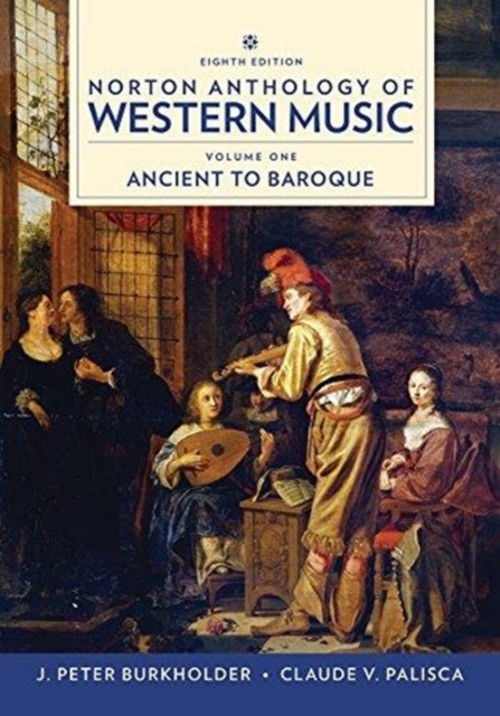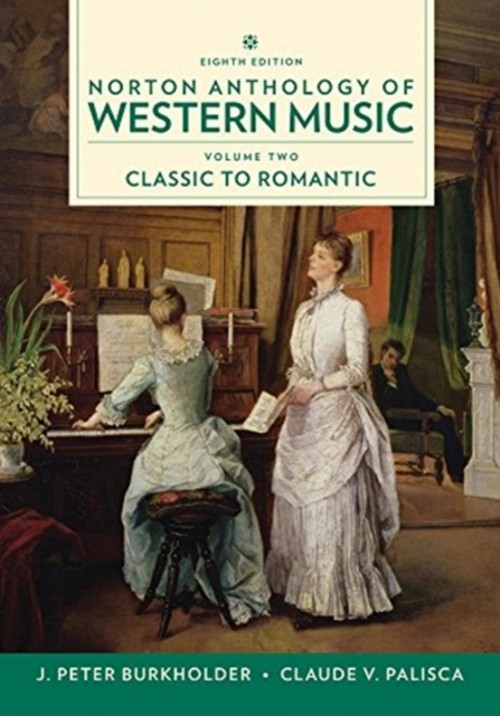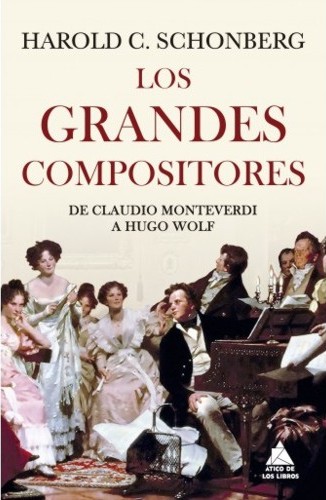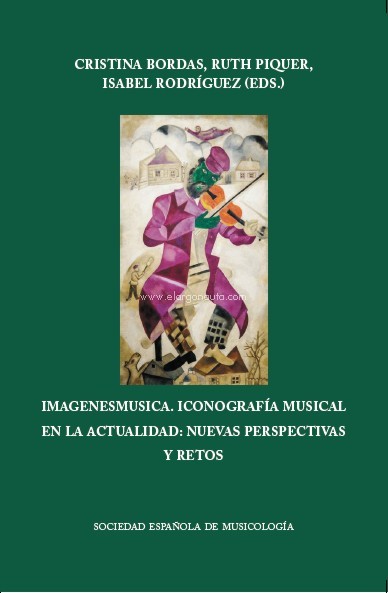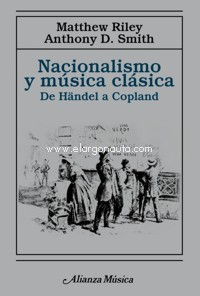
A History of Western Music
Grout, Donald Jay
;Palisca, Claude V.
W. W. Norton & Company. 2005Ficha técnica
- EAN: 9780393979916
- ISBN: 978-0-393-97991-6
- Editorial: W. W. Norton & Company
- Fecha de edición: 2005
- Encuadernación: Cartoné
- Dimensiones: 18x25,5
- Idioma: Inglés
- Nº páginas: 1090
No disponible temporalmente
Disponibilidad sujeta a la información del editorPVP. 66,40€
Añadir a la Lista de deseos
Renowned for its comprehensive coverage of genres and styles in Western music from antiquity to the present, A History or Western Music has secured its place?through six editions and for almost a half-century?as the definitive resource for every music student.
Maintaining the authority and breadth of coverage that have always defined this classic text, J. Peter Burkholder has meticulously revised and restructured the text to make it more accessible for today?s students. This revision places a stronger emphasis on social and historical context and adds substantially expanded pedagogy and striking four-color design.
* Reorganized for Clarity, Rewritten for Accessibility
Professor Burkholder has substantially rewritten and reorganized the new edition to create a more useable, readable text. The longer chapters of previous editions have been divided into more specific subjects, helping students approach broad periods and movements in smaller, more focused chapters. Concise introductions establish essential social and historical context; pithy summaries focus on reception history, highlighting the value of the music in its own day and the importance for us today. The heart of each chapter explores changes in musical genres and styles, profiling composers and their works and the audiences who listened to them. Here, the prose has been revitalized, paring away outdated or unnecessary material to create a lively and compelling narrative history of music in Western culture.
* Expanded Coverage of Social and Cultural History
Introducing a stronger emphasis on social and historical context, the Seventh Edition provides a coherent, accessible narrative of the development of Western music within Western history. The chapters are structured around three central themes: people making choices; what those who created, performed, heard, and paid for music valued in it; and the tension between technological innovation and cultural tradition. This humanistic approach places individuals -listeners, consumers, critics, and composers- at the center of the narrative, and helps students better interpret the historical significance of works and styles.
* Updated, Balanced Coverage
Professor Burkholder has responded to the requests of instructors by increasing coverage of underrepresented repertoires, especially twentieth-century music, music of the Americas, and popular idioms from the sixteenth century to the present. In response to requests from instructors, 40 percent of the core repertory is new to this edition, including pieces by Léonin, Pérotin, Johannes Ciconia, Juan del Encina, Thomas Morley, Luiz de Narv·ez, Biagio Marini, Elisabeth Jacquet de la Guerre, Juan de Araujo, Antonio Vivaldi, William Billings, Joseph Haydn, Stephen Foster, Felix Mendelssohn, Clara Schumann, Georges Bizet, Modest Musorgsky, Scott Joplin, Sergei Rachmaninov, Igor Stravinsky, Charles Ives, Bessie Smith, Duke Ellington, Ruth Crawford Seeger, Silvestre Revueltas, Samuel Barber, John Cage, Krzysztof Penderecki, Arvo Part, and Bright Sheng. Many works continued from previous editions are featured on the recordings in new, riveting performances.
* Enhanced Pedagogy
The reorganized structure of the Seventh Edition highlights the essential information students need to understand Western music, reinforcing core concepts and historical context throughout the text. Each chapter begins with the historical and social context, and ends with a summary that focuses on the reception and legacy of the music treated in the chapter. Chapter Overviews establish specific historical and social context, and summaries focus on the social reception and legacy of the chapter?s music. A wide variety of engaging sidebars and illustrative material help students grasp and retain the core concepts and history covered in the text.
- Composer boxes detail the lives and works of individual composers without interrupting the text?s narrative flow.
- Music in Context boxes emphasize the vital importance of music in the daily lives of people at every level of society.
- Musical Innovation boxes -one in each of the text?s six parts- focus on key innovations that caused significant changes in musical style, dissemination, or consumption.
- Source Readings offer short contextual snapshots of key figures, ideas, and events, revealing how music was received in its own day.
- New Maps and Timelines provide succinct geographical and historical orientation.
CONTENIDO:
Part I: The Ancient and Medieval Worlds
1. Music in Antiquity
2. The Christian Church in the First Millennium
3. Roman Liturgy and Chant
4. Song and Dance Music in the Middle Ages
5. Polyphony through the Thirteenth Century
6. French and Italian Music in the Fourteenth Century
Part II: The Renaissance
7. The Age of the Renaissance
8. England and Burgundy in the Fifteenth Century
9. Franco-Flemish Composers, 1450?1520
10. Sacred Music in the Era of the Reformation
11. Madrigal and Secular Song in the Sixteenth Century
12. The Rise of Instrumental Music
Part III: The Seventeenth Century
13. New Styles in the Seventeenth Century
14. The Invention of Opera
15. Music for Chamber and Church in the Early Seventeenth Century
16. France, England, Spain, and the New World in the Seventeenth Century
17. Italy and Germany in the Late Seventeenth Century
Part IV: The Eighteenth Century
18. The Early Eighteenth Century in Italy and France
19. German Composers of the Late Baroque
20. Opera and Vocal Music in the Early Classic Period
21. Instrumental Music: Sonata, Symphony, and Concerto at Midcentury
22. Classic Music in the Late Eighteenth Century
Part V: The Nineteenth Century
23. Revolution and Change
24. The Romantic Generation: Song and Piano Music
25. Romanticism in Classic Forms: Orchestral, Chamber, and Choral Music
26. Romantic Opera and Musical Theater to Midcentury
27. Opera and Musical Theater in the Later Nineteenth Century
28. Late Romanticism in Germany and Austria
29. Diverging Traditions in the Later Nineteenth Century
Part VI: The Twentieth Century and After
30. The Early Twentieth Century
31. Modernism and the Classical Tradition
32. Between the World Wars: Jazz and Popular Music
33. Between the World Wars: The Classical Tradition
34. Postwar Crosscurrents
35. The End of the Millennium



